Historic Church Fire in the South End of Albany Ruled Accidental

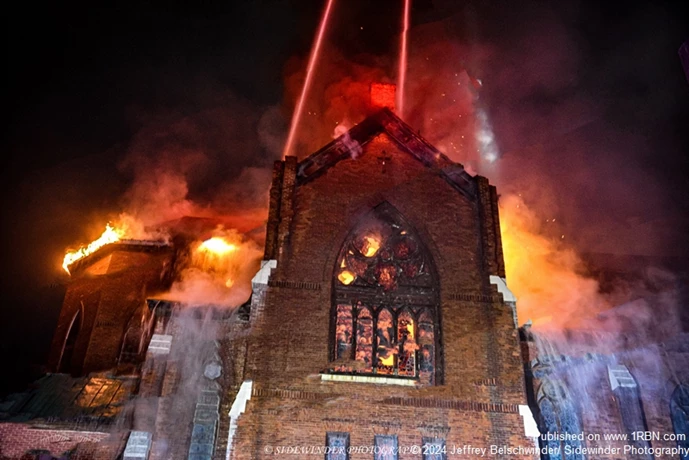
Photo by Jeffrey Belschwinder/ Sidewinder PhotographyAlbany Firefighters Using Master Streams On A 2nd Alarm Church Fire
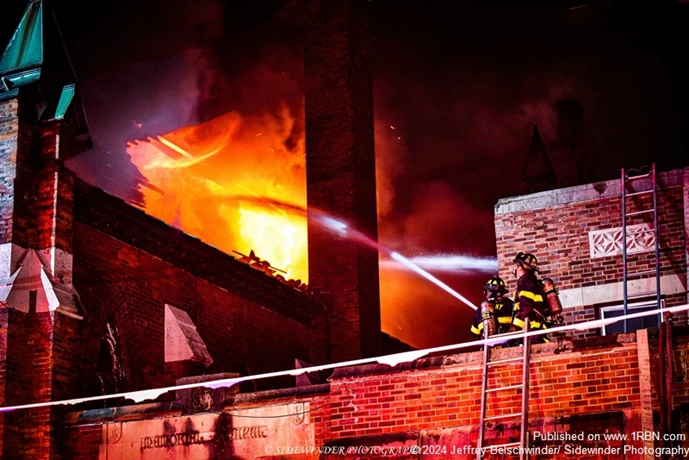
Photo by Jeffrey Belschwinder/ Sidewinder PhotographyAlbany Firefighters Using A Hand Line To Hit The Heavy Fire In The Roof of The Church
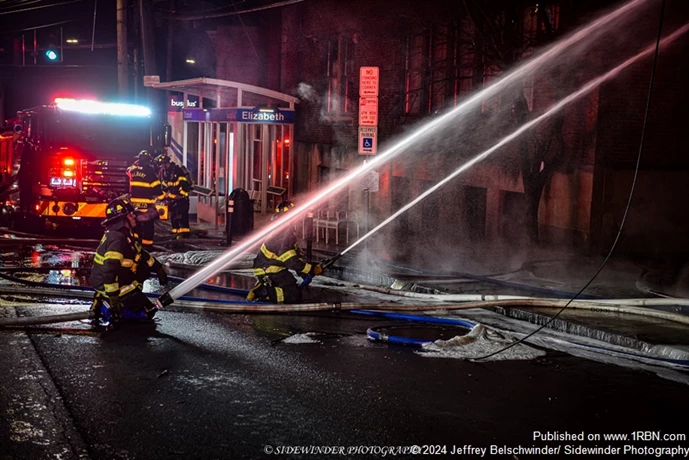
Photo by Jeffrey Belschwinder/ Sidewinder Photography
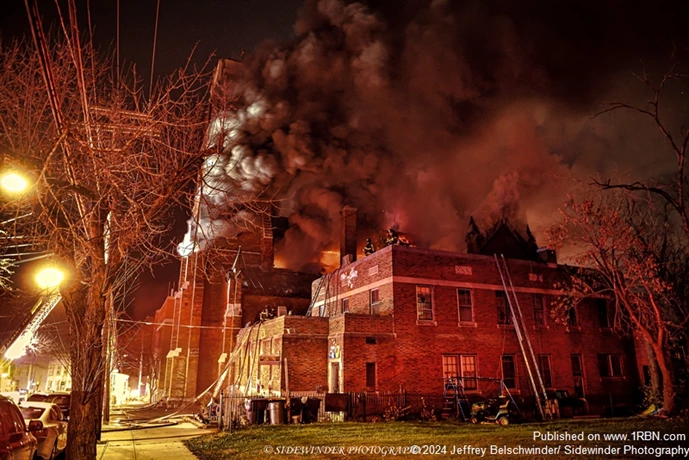
Photo by Jeffrey Belschwinder/ Sidewinder PhotographyHeavy smoke pushes from the bell tower of the Elijah Missionary Baptist Church in the city of Albany's south end.
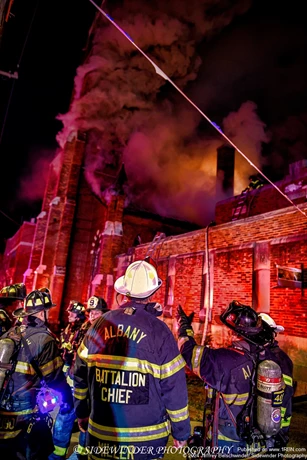
Photo by Jeffrey Belschwinder/ Sidewinder Photography
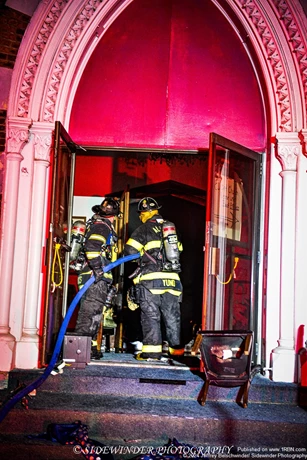
Photo by Jeffrey Belschwinder/ Sidewinder PhotographyFirefighters Protecting The Front Door As Firefighters Are Backing Out of The Building
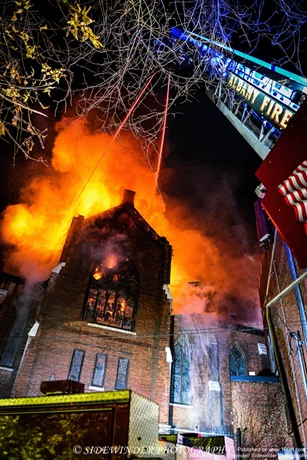
Photo by Jeffrey Belschwinder/ Sidewinder Photography
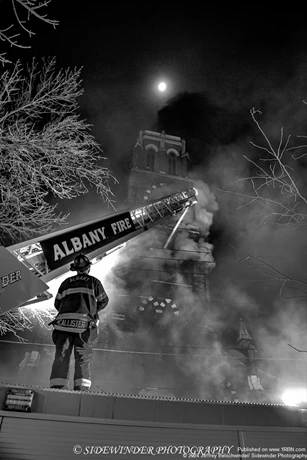
Photo by Jeffrey Belschwinder/ Sidewinder Photography
ALBANY, NY - On November 14, 2024, at 10:33 P.M., the city of Albany emergency communication center became flooded with phone calls for a reported church fire at 74 2nd Avenue at the Elijah Missionary Baptist Church in the city of Albany south end.
Multiple callers reported the church to be on fire. Engines 1, 5 9 and 2, Rescue 9, Trucks 1, 2 and 4, the rescue squad, Mohawk Ambulance Service, and the battalion chief responded to the scene. Rescue 9 arrived on scene and had heavy smoke showing from the church, immediately transmitted the Signal 30 and requested additional resources to the scene. Engine 5 took the fire hydrant on the corner and laid into the scene as Truck 2 took the 'bravo' side of the street and truck 1 took the front of the building. Firefighters notified the dispatcher that they had heavy smoke showing from the roof of the church and all of the eaves.
Command was able to confirm that everybody was out of the church, and firefighters were going to attempt to make an aggressive interior attack. Firefighters made entry inside of the structure and made their way up to the second-floor to begin searching for the seat of the fire. As firefighters were doing so, additional firefighters began to come inside of the main area of the church and found heavy smoke visible in the roof line areas. Firefighters took out a window for ventilation, which caused the fire to grow in intensity.
Additional firefighters quickly began to toss ladders to the adjacent building and deploy multiple hand lines and two-and-a-half-inch hand lines to the roof area for defensive operations if necessary. Thick, heavy black smoke continued to push heavily from the belt top area of the church and out of the roof. Firefighters on the first-floor had heavy fire pushing over their heads at the roof area. As they were attempting to hit the fire in the high roof areas, large portions of the building began to fall around them, and firefighters made their way back to the safety of the doorway.
As firefighters continued to make an aggressive push on the second-floor, they notified command that they had extremely heavy fire conditions on the second-floor in the balcony area, and the fire had made its way into the structural members of the roof. As firefighters were working, heavy fire blew through the roof of the structure on the 'delta' and 'bravo' sides. As this was occurring, firefighters were deploying a two-and-a-half-inch hand line to the second-floor to continue the effort of making an aggressive push inside of the church. As firefighters pushed across the balcony, they noticed the floor had burned through and had become unsafe for them to continue to go forward. Firefighters held their position with the two-and-a-half-inch hand line, and another battalion chief in the rear of the structure stated that they had heavy fire that had breached the stain glass windows in the rear, and requested another truck company to set up in the back.
Command inside of the structure notified units on the second-floor that they needed to start to back out, and firefighters from the truck company and rescue squad were going to give them suppression support from the roof next door. Firefighters made their way outside and as they were doing so, heavy fire blew through the 'delta' side of the structure and a large portion of the roof started to give way, sending hot embers flying into the air. As this was happening, firefighters began to pull the hand lines from the structure and extremely large pieces of roof began to crash down into the first-floor. Firefighters utilized a hand line from the doorway to protect the exit as they continued to work to knock down the fire and pull the hand lines from the building. As soon as all of the hand lines were out of the building, Truck 1 began to back up on the street and get into position to go into master stream operations. An additional truck company backed down the street and set up next to Engine 9. As firefighters were setting up for master stream operations, they experienced a major collapse inside of the structure of the second-floor balcony into the first-floor, sending a large column of smoke out the front door of the structure and through a portion of the roof and bell top. Firefighters on the ground stretched a supply line to the truck company.
Fire on the 'bravo' side and 'charlie' side of the structure had burned through the roof area and a significant portion of the roof had fell to the ground nearby. After establishing all of the water supplies, firefighters in the front of the structure went into master stream operations, putting over 1000-GPM through the front of the structure. As they were doing so, the heavy black turbulent smoke and heavy fire began to die down. Firefighters on the roof next door continued utilizing hand lines to knock down the visible fire. Large amounts of water poured out the front door of the structure into the street. As firefighters continued to work on scene, heavy fire blew through the 'bravo' side of the structure along with the stain glass windows in the front of the structure. Firefighters deployed additional hand lines to those areas and began to attempt to knock down the fire. One firefighter utilized a pike pole and began to break out the stained-glass windows on the front of the structure to gain access to the fire.
Additional resources from the city of Troy’s FD and Watervliet Arsenal FD were brought into the city to cover calls. Firefighters continued to conduct exterior operations and master stream operations for an extended period of time until the early hours of the morning. During this time frame, they had multiple collapses on the structure. As soon as all of the heavy fire conditions were knocked down, command switched over and firefighters utilized caution and began to inspect the structural integrity of the building with the help of the city's engineer.
Firefighters on scene continued hitting hot spots until the early hours of the morning. During daylight, firefighters made their way inside along with members of the city's structural engineering team and began to look into the safety of the building. Fire investigators began to conduct their investigation into what caused the fire. After an extended period of time and an extensive investigation, fire investigators were able to determine that a space heater caused the fire. No injuries were reported during the extensive operation. The city of Albany lost a major historical building from this fire.








